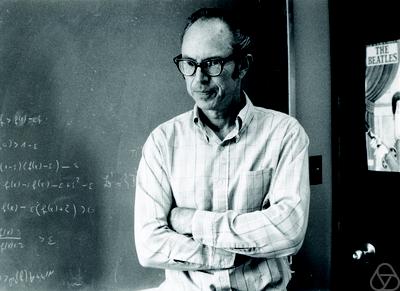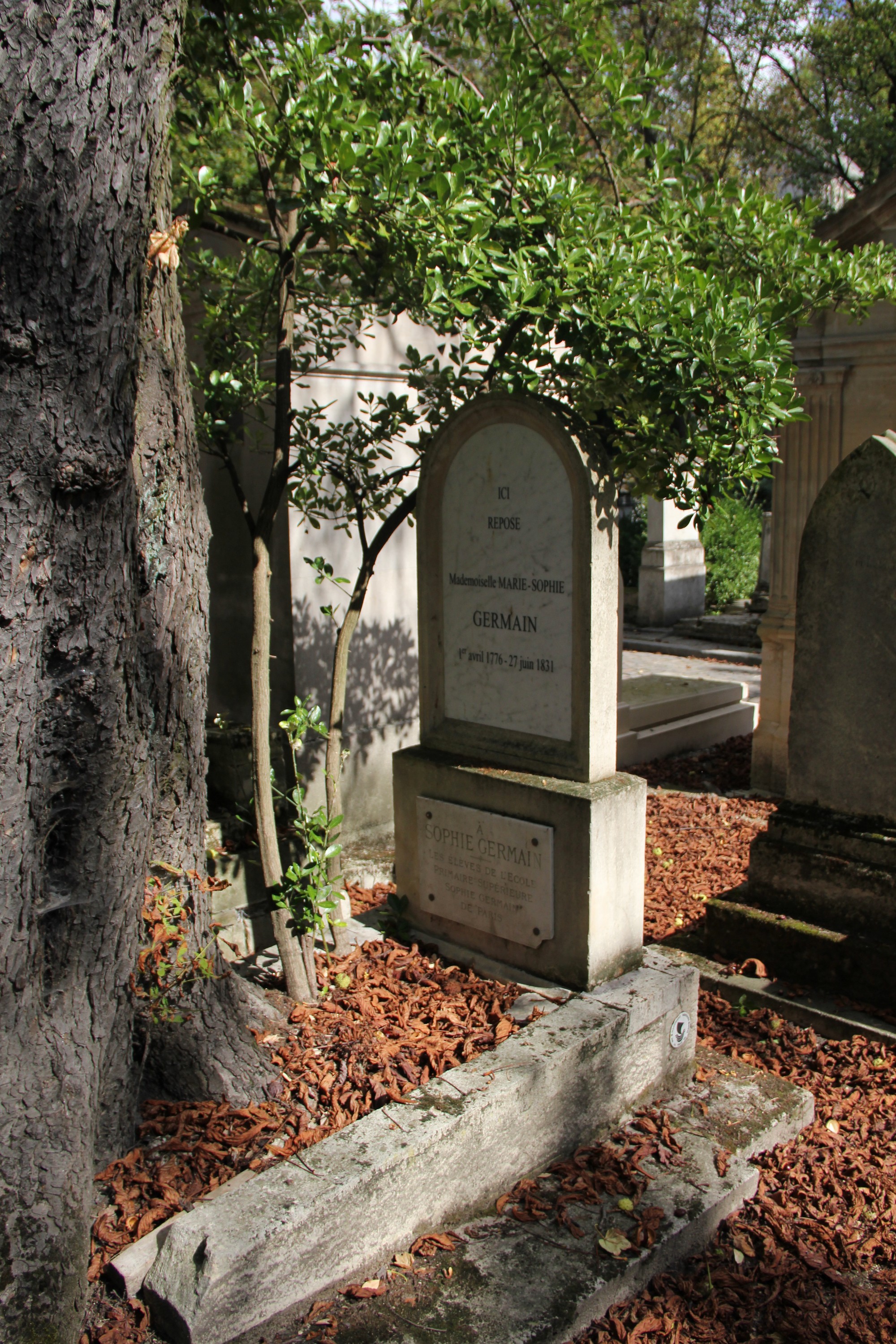|
Arthur Besse
Arthur Besse is a pseudonym chosen by a group of French differential geometers, led by Marcel Berger, following the model of Nicolas Bourbaki. A number of monographs have appeared under the name. Bibliography * ** *Actes de la Table Ronde de Géométrie Différentielle. roceedings of the Roundtable on Differential GeometryEn l'honneur de Marcel Berger. n honor of Marcel BergerHeld in Luminy, July 12–18, 1992. Edited by Arthur L. Besse. Séminaires et Congrès eminars and Congresses 1. Société Mathématique de France, Paris; distributed by American Mathematical Society, Providence, RI, 1996. *Besse, Arthur L.: Some trends in Riemannian geometry. Duration and change, 71–105, Springer, Berlin, 1994 . *Besse, A. Многообразия Эйнштейна. Том I,II. (Russian) instein manifolds. Vol. I, IITranslated from the English and with a preface by D. V. Alekseevskiĭ. "Mir", Moscow, 1990. Vol. I: 320 pp.; Vol. II: pp. 321–704. *Besse, Arthur L.: ... [...More Info...] [...Related Items...] OR: [Wikipedia] [Google] [Baidu] |
Pseudonym
A pseudonym (; ) or alias () is a fictitious name that a person or group assumes for a particular purpose, which differs from their original or true name (orthonym). This also differs from a new name that entirely or legally replaces an individual's own. Many pseudonym holders use pseudonyms because they wish to remain anonymous, but anonymity is difficult to achieve and often fraught with legal issues. Scope Pseudonyms include stage names, user names, ring names, pen names, aliases, superhero or villain identities and code names, gamer identifications, and regnal names of emperors, popes, and other monarchs. In some cases, it may also include nicknames. Historically, they have sometimes taken the form of anagrams, Graecisms, and Latinisations. Pseudonyms should not be confused with new names that replace old ones and become the individual's full-time name. Pseudonyms are "part-time" names, used only in certain contexts – to provide a more clear-cut separation between ... [...More Info...] [...Related Items...] OR: [Wikipedia] [Google] [Baidu] |
Differential Geometry
Differential geometry is a mathematical discipline that studies the geometry of smooth shapes and smooth spaces, otherwise known as smooth manifolds. It uses the techniques of differential calculus, integral calculus, linear algebra and multilinear algebra. The field has its origins in the study of spherical geometry as far back as antiquity. It also relates to astronomy, the geodesy of the Earth, and later the study of hyperbolic geometry by Lobachevsky. The simplest examples of smooth spaces are the plane and space curves and surfaces in the three-dimensional Euclidean space, and the study of these shapes formed the basis for development of modern differential geometry during the 18th and 19th centuries. Since the late 19th century, differential geometry has grown into a field concerned more generally with geometric structures on differentiable manifolds. A geometric structure is one which defines some notion of size, distance, shape, volume, or other rigidifying st ... [...More Info...] [...Related Items...] OR: [Wikipedia] [Google] [Baidu] |
Marcel Berger
Marcel Berger (14 April 1927 – 15 October 2016) was a French mathematician, doyen of French differential geometry, and a former director of the Institut des Hautes Études Scientifiques (IHÉS), France. Formerly residing in Le Castera in Lasseube, Berger was instrumental in Mikhail Gromov's accepting positions both at the University of Paris and at the IHÉS. Awards and honors *1956 Prix Peccot, Collège de France *1962 Prix Maurice Audin *1969 Prix Carrière, Académie des Sciences *1978 Prix Leconte, Académie des Sciences *1979 Prix Gaston Julia *1979–1980 President of the French Mathematical Society. *1991 Lester R. Ford Award Selected publications * Berger, M.Geometry revealed Springer, 2010. * Berger, M.: What is... a Systole? Notices of the AMS 55 (2008), no. 3, 374–376online text* * * *Berger, Marcel; Gauduchon, Paul; Mazet, Edmond: Le spectre d'une variété riemannienne. (French) Lecture Notes in Mathematics, Vol. 194 Springer-Verlag, Berlin-New York 1971. ... [...More Info...] [...Related Items...] OR: [Wikipedia] [Google] [Baidu] |
Nicolas Bourbaki
Nicolas Bourbaki () is the collective pseudonym of a group of mathematicians, predominantly French alumni of the École normale supérieure - PSL (ENS). Founded in 1934–1935, the Bourbaki group originally intended to prepare a new textbook in analysis. Over time the project became much more ambitious, growing into a large series of textbooks published under the Bourbaki name, meant to treat modern pure mathematics. The series is known collectively as the '' Éléments de mathématique'' (''Elements of Mathematics''), the group's central work. Topics treated in the series include set theory, abstract algebra, topology, analysis, Lie groups and Lie algebras. Bourbaki was founded in response to the effects of the First World War which caused the death of a generation of French mathematicians; as a result, young university instructors were forced to use dated texts. While teaching at the University of Strasbourg, Henri Cartan complained to his colleague André Weil of the inade ... [...More Info...] [...Related Items...] OR: [Wikipedia] [Google] [Baidu] |
John Rainwater
The fictitious mathematician John Rainwater was created as a student prank but has become known as the author of important results in functional analysis. At the University of Washington in 1952, John Rainwater was invented and enrolled in a mathematics course by graduate students who were in possession of a duplicate student-registration form. Later, mathematicians published under the pseudonym of John Rainwater. Papers were published under the name Rainwater mainly in functional analysis, particularly in the geometric theory of Banach spaces and in convex functions. Rainwater's theorem is an important result in summability theory and functional analysis. The University of Washington's seminar in functional analysis is called the Rainwater seminar, and the associated Rainwater notes have influenced Banach-space theory and convex analysis. The concept of a fictional pseudonym used by multiple people creating valuable mathematics is not unique. Most notably, Nicolas Bourbaki ... [...More Info...] [...Related Items...] OR: [Wikipedia] [Google] [Baidu] |
Blanche Descartes
Blanche Descartes was a collaborative pseudonym used by the English mathematicians R. Leonard Brooks, Arthur Harold Stone, Cedric Smith, and W. T. Tutte. The four mathematicians met in 1935 as undergraduate students at Trinity College, Cambridge, where they joined the Trinity Mathematical Society and began meeting together to work on mathematical problems. Pseudonym The pseudonym originated by combining the initials of the mathematicians' given names (Bill, Leonard, Arthur, and Cedric) to form ''BLAC''. This was extended to ''BLAnChe''. The surname ''Descartes'' was chosen as a play on the common phrase ''carte blanche''. Publication Over 30 works were published under the name, including whimsical poetry and mathematical humour, but some serious mathematical results as well. Many of these publications appeared in ''Eureka'', a mathematical student magazine in Cambridge. Notably, the foursome proved several theorems in mathematical tessellation. In particular, they solved the ... [...More Info...] [...Related Items...] OR: [Wikipedia] [Google] [Baidu] |
Sophie Germain
Marie-Sophie Germain (; 1 April 1776 – 27 June 1831) was a French mathematician, physicist, and philosopher. Despite initial opposition from her parents and difficulties presented by society, she gained education from books in her father's library, including ones by Euler, and from correspondence with famous mathematicians such as Lagrange, Legendre, and Gauss (under the pseudonym of Monsieur LeBlanc). One of the pioneers of elasticity theory, she won the grand prize from the Paris Academy of Sciences for her essay on the subject. Her work on Fermat's Last Theorem provided a foundation for mathematicians exploring the subject for hundreds of years after. Because of prejudice against her sex, she was unable to make a career out of mathematics, but she worked independently throughout her life. Before her death, Gauss had recommended that she be awarded an honorary degree, but that never occurred. On 27 June 1831, she died from breast cancer. At the centenary of her life, a str ... [...More Info...] [...Related Items...] OR: [Wikipedia] [Google] [Baidu] |
Differential Geometry
Differential geometry is a mathematical discipline that studies the geometry of smooth shapes and smooth spaces, otherwise known as smooth manifolds. It uses the techniques of differential calculus, integral calculus, linear algebra and multilinear algebra. The field has its origins in the study of spherical geometry as far back as antiquity. It also relates to astronomy, the geodesy of the Earth, and later the study of hyperbolic geometry by Lobachevsky. The simplest examples of smooth spaces are the plane and space curves and surfaces in the three-dimensional Euclidean space, and the study of these shapes formed the basis for development of modern differential geometry during the 18th and 19th centuries. Since the late 19th century, differential geometry has grown into a field concerned more generally with geometric structures on differentiable manifolds. A geometric structure is one which defines some notion of size, distance, shape, volume, or other rigidifying st ... [...More Info...] [...Related Items...] OR: [Wikipedia] [Google] [Baidu] |
Pseudonymous Mathematicians
A pseudonym (; ) or alias () is a fictitious name that a person or group assumes for a particular purpose, which differs from their original or true name (orthonym). This also differs from a new name that entirely or legally replaces an individual's own. Many pseudonym holders use pseudonyms because they wish to remain anonymous, but anonymity is difficult to achieve and often fraught with legal issues. Scope Pseudonyms include stage names, user names, ring names, pen names, aliases, superhero or villain identities and code names, gamer identifications, and regnal names of emperors, popes, and other monarchs. In some cases, it may also include nicknames. Historically, they have sometimes taken the form of anagrams, Graecisms, and Latinisations. Pseudonyms should not be confused with new names that replace old ones and become the individual's full-time name. Pseudonyms are "part-time" names, used only in certain contexts – to provide a more clear-cut separation between o ... [...More Info...] [...Related Items...] OR: [Wikipedia] [Google] [Baidu] |


